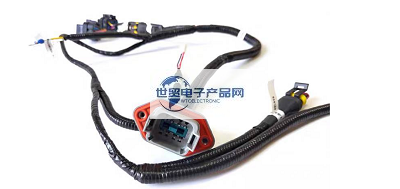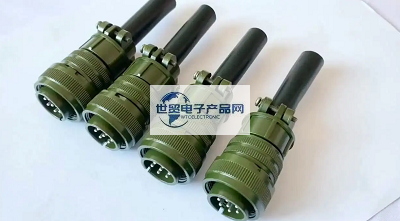Categorization:Product Information
RF technology for military and commercial avionics applications, while meeting stringent electrical and mechanical safety requirements, prioritizes weight reduction for fuel efficiency. In the shock and vibration environment, low loss, phase stability and high performance need to be balanced by means of materials, structure and maintenance to reduce the size. Current complex requirements for frequency bands, including 5G, new and upgraded satellite communications (SATCOM) systems, and instrument flight procedure (IFP) systems using Bluetooth, are creating the need for lighter, smaller, and more accurate radio frequency (RF) solutions. In some cases, these systems can run above 90 GHz. The avionics industry requires the use of low loss, high temperature, and highly flexible cables for applications such as navigation, collision avoidance, and communication systems communications in GPS, Automatic Dependent Surveillance-Broadcast (ADS-B), satellite communications, and air-to-ground applications. Space for avionics applications is also limited due to the need to meet the overall application requirements of the equipment. Semi-rigid schemes are commonly used for these applications as the frequency increases and the interconnect size becomes smaller to accommodate smaller wavelengths. However, these very small parts can become fragile, making them difficult to install and impossible to troubleshoot. Highly flexible, high performance cable for open box applications in dense packaging; flexible components that can be bent around tight corners and close together to minimize footprint, save space and simplify cable routing in tight spaces. The flex cable does not need to protect the back of the connector and is easy to maintain. The high level of vibration while flying can put a lot of stress on the circuit board hardware. Interconnect systems require minimal space between cables and connectors to withstand high vibrations.

---------------------------------------------------------------------------------------------------
1、 Inspired by commercial innovations in the air, Urban Air Mobility (UAM) is a concept for a safe and efficient air transportation system that will use highly automated aircraft to operate and transport passengers and cargo in urban and suburban low-altitude areas. Most UAM vehicles operate below 10000 feet, and battery power limits their altitude and flight time. As technology advances, the density of UAMs in motion increases, and their ADS systems need to constantly communicate to avoid collisions when they are "swarming.". Such systems rely heavily on antennas and high-frequency transceivers to allow sensors to communicate with each other, so low-loss, reliable, lightweight cables are key to reliable communications. In addition, there is the Advanced Air Transport (AAM) solution, which is built on the UAM concept, and its applications will operate outside urban environments, from unmanned aircraft to electric vertical take-off and landing (eVTOL) applications. Like electric vehicles, eVTOL controllers are powered by electricity in the car, and the battery is heavy, so weight is also an important consideration. So while these technologies adhere to the size and weight principles that have dominated their predecessors for decades, they also require advanced solutions to meet new demands. 2、 Unmanned Aerial Vehicles Another rapidly growing area of avionics is the Unmanned Aerial Vehicle (UAV). Some UAVs are fairly simple, use a single data link, and require a relatively simple RF connectivity solution. However, when hypersonic technology is used, some UAVs can fly at Mach 5, which increases the demand for high temperatures. The higher the altitude, the faster the speed, the higher the frequency, the more complex the problem from the material point of view. This can be solved with dielectrics; in addition, it is possible to use quartz materials as dielectrics for hypersonic applications. Ultimately, the structural designer needs to understand the environment, the altitude requirements of the UAV, the required lifetime, how long maintenance is required, and what type of test environment. For example, will the drone carry an electronic warfare (EW) system or an electronic intelligence system, or will it be a pure data link and video? 3、 proper interconnections An important consideration for RF interconnections for avionics is the dielectric and how it behaves in equilibrium with the surrounding environment. For example, at a certain flight altitude, the aircraft creates more vacuum conditions to provide outgassing conditions for dielectric and other electronic materials. After the plane returned to the ground, the cable was basically vacuum. Any fluid or gas surrounding it will be absorbed by the dielectric and will recondense there. Back then, dielectrics were like sponges: only baking removed contaminants. Obviously, this is not feasible inside an aircraft, so for high-end, high-performance, high-altitude applications, vapor sealing is also important. There are many factors that must be considered when designing a suitable RF interconnection scheme. Polyethylene, for example, enhances flame retardancy and is an excellent choice for wiring with a flame retardant UL listed jacket for outdoor or indoor environments. Note: PUs can be more flexible, but they are not suitable for manned environments. In the case of airframes, high temperature resistant PTFE (synthetic fluoropolymer) dielectric cables are typically used and can be wound with higher losses than standard PTMP (polyester plastic). This type of solution can be used at 50 GHz or above. In the high temperature range, some silica cables can be rated above 800 ° C. The final goal of 4、 connector optimization is to optimize the mechanical, environmental, and electrical properties of the connector and make it very easy to install. Aluminum and plastic joints are available in a variety of options to keep the weight light. The industry is developing plastics with materials such as Delrin, including threaded, snap-in, and bayonet connectors. Work is also underway on other ultra-lightweight solutions, including modular connector solutions with plastic coupling and tooling solutions. This method facilitates maintenance and allows the user to solve problems directly in the field. 5、 tools simplify assembly in the aftermarket, and when servicing RF interconnect solutions or in the field, some tools that are not blades can be used in the field, making field assembly safer and easier to assemble in disputed areas. This approach, taken by companies such as Times Microwave Systems, allows everyone to use the same tool in the cable without having to have multiple technicians using different types of tools and techniques. Times Microwave Systems offers the InstaBend (IB) 047, a compact, stable, miniature coaxial cable. Originally designed for space flight applications, this high performance cable can be easily adapted for high density packaging applications.

---------------------------------------------------------------------------------------------------
2、 on the World Trade Electronic Products Network Platform and Sales Product Profile: World Trade Electronic Products Network-professional agent/production/sales of various { connector | harness | cable products }; If you have relevant [connector | harness | cable products] procurement/purchase needs or want to buy/know what connector | harness | cable products solutions we can provide, please contact our business personnel below; if you have relevant [connector | harness | cable products] sales/resources and promotion needs, please click "Business Cooperation ←" to negotiate with the specialist!